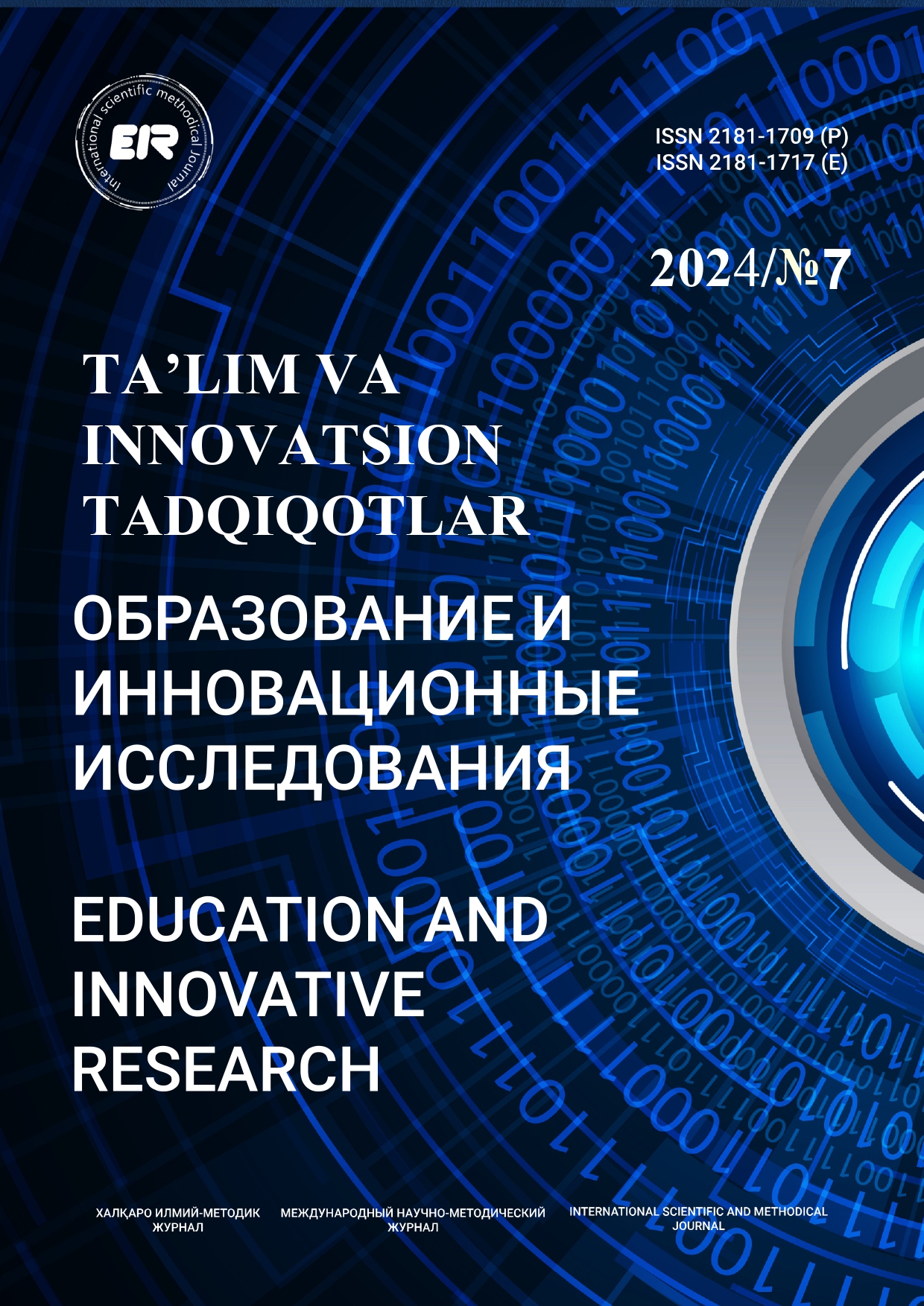РОЛЬ ЛИНГВОДИДАКТИЧЕСКИХ ПОДХОДОВ И ПЕДАГОГИЧЕСКИХ ТЕХНОЛОГИЙ В СОВЕРШЕНСТВОВАНИИ ПРАГМАТИЧЕСКОЙ КОМПЕТЕНЦИИ СТУДЕНТОВ УРОВНЯ B2 В АНГЛИЙСКОМ ЯЗЫКЕ
Ешанов Марат Уразалиевич, Докторант Узбекского государственного университета мировых языков
Ключевые слова:
прагматика, обучение, подход, эксплицитное обучение, имплицитное обучение, технология, диалог, текст, указание, дедуктивный метод, индуктивный метод, интерактивный, анализ, дидактический характер, материал, учебник, упражнения, речевые акты, диалог, программа, метапрагматические указания, коммуникативный контекст, прагматическая цель, прагматические знания и навыки, аутентичный язык, прагматическое исследование, практика, задания, задачаАннотация
В статье обсуждаются основные лингвидактические вопросы развития прагматической компетенции и совершенствования прагматических знаний и навыков на английском языке и значение использования педагогических технологий и дидактических задач в их совершенствовании. Прагматические исследования стали частью обучения языкам в последние годы. Существует множество результатов, которые предлагают ценные идеи для преподавания прагматики второго языка. Тем не менее, существуют большие недостатки в применении этих результатов в учебных материалах и классной практике. Хотя прагматика является неотъемлемой частью базовых конструкций коммуникативных компетенций, как утверждают такие ученые, как Бахман и Палмер, а также Канале и Суэйн, практическое обучение ей на уроках зачастую не наблюдается. Вероятно, к такой неопределенности может быть причастна несколько факторов. В этой статье также отражены предложения и рекомендации по совершенствованию прагматической компетенции в условиях изучения английского языка как иностранного на основе методов, подходов и задач.
Библиографические ссылки
Alcón Soler, E. (2012). Teachability and bilingualism effects on third language learners’ pragmatic knowledge. Intercultural Pragmatics, 9(4), 511-541. De Gruyter Mouton.
Bachman, L. F., & Palmer, A. S. (2010). Language testing in practice. Oxford: Oxford University Press.
Bardovi-Harlig, K. (2020). Pedagogical linguistics: A view from L2 pragmatics. Pedagogical Linguistics, 1(1), 44–65.
Ishihara, N., & Cohen, A. (2022). Teaching and learning pragmatics: Where language and culture meet. New York, NY: Routledge.
Kasper, G., & Rose, K. (2002). Pragmatic development in a second language. Oxford, UK: Blackwell.
Kim, Y., & Taguchi, N. (2015). Promoting task-based pragmatics instruction in EFL classroom context: The role of task complexity. Modern Language Journal, 99, 656–677.
O‘zbekiston Respublikasi Prezidentining 2022-yil 28-yanvardagi PF №60-son “2022-2026 yillarga mo‘ljallangan Yangi O‘zbekistonning taraqqiyot strategiyasi to‘g‘risida”gi Farmoni
Plonsky, L., & Zhuang, J. (2019). A meta-analysis of L2 pragmatics instruction. In N. Taguchi (Ed.), The Routledge handbook of second language acquisition and pragmatics (pp. 287–307). Routledge. https://doi.org/10.4324/9781351164085-19
Rebuschat, P. (Ed.). (2015). Implicit and explicit learning of languages (Vol. 48). John Benjamins. https://doi.org/10.1075/sibil.48
Roever, C. (2022). Teaching and testing second language pragmatics and interaction. Routledge.
Riddiford, N., & Newton, J. (2010). Workplace talk in action: An ESOL resource. School of Linguistics and Applied Language Studies, Victoria University of Wellington.
Sattorova, F. E. (2023). Ingliz tilida muloqot pragmatik kompetensiyasi va uni rivojlantirishning lingvodidaktik muammolari:Avtoref.diss…ped.fan.f.dok. Samarqand.
Taguchi, N., & Roever, C. (2017). Second language pragmatics. Oxford: Oxford University Press.
Taguchi, N. (Ed.). (2019). The Routledge handbook of SLA and pragmatics. New York, NY: Routledge.
Tateyama, Y. (2019). Pragmatics in a language classroom. In N. Taguchi (Ed.), The Routledge handbook of second language acquisition and pragmatics (pp. 400–412). Routledge. https://doi.org/10.4324/9781351164085-26
Takimoto, M. (2012). Metapragmatic discussion in interlanguage pragmatics.
Journal of Pragmatics, 44(10), 1240-1253.





